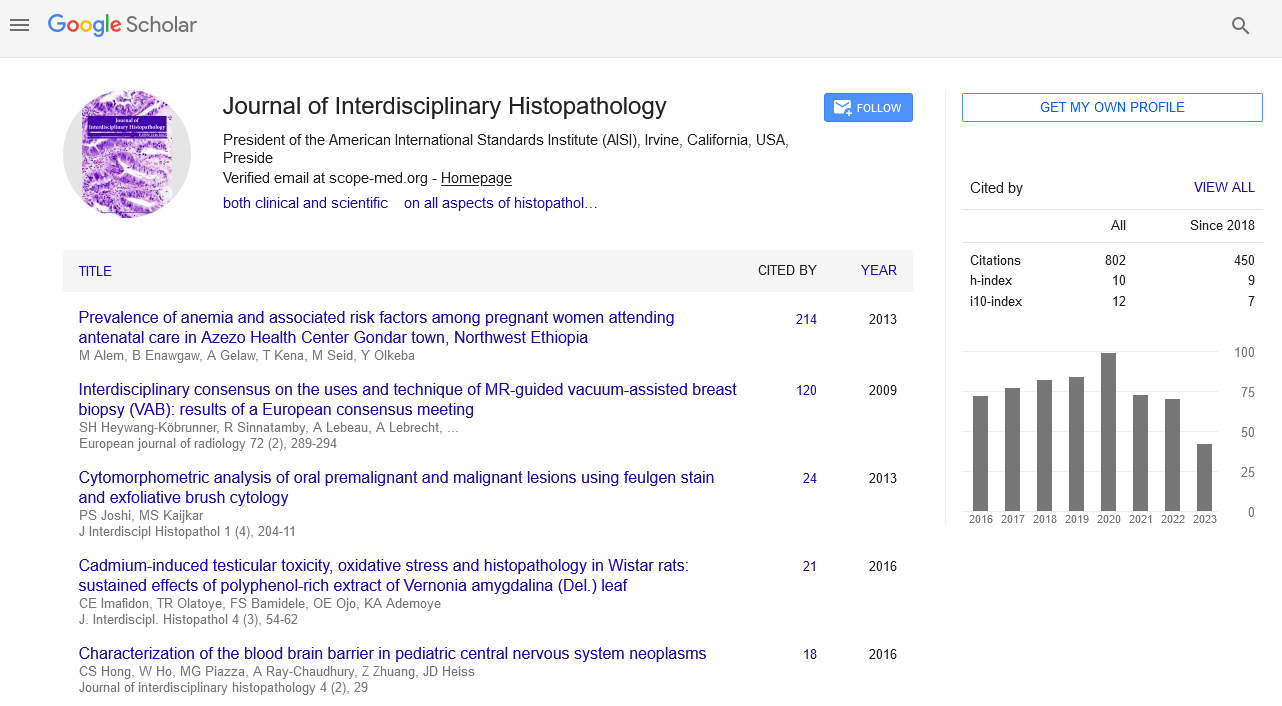Commentary - Journal of Interdisciplinary Histopathology (2021)
Epithelial Ovarian Tumours
Lulian Mathew*Assistant professor. Lulian Mathew, University of Medicine and Pharmacy, Brazil, Email: LulianMathew@yahoo.com
Received: 08-Jun-2021 Published: 29-Jun-2021
Introduction
Epithelial ovarian tumours represent the most common type of ovarian tumor. Most of malignant cases represent high-grade serous, clear cell and endometrioid carcinomas; borderline serous and mucinous tumours of intestinal type are less common.
Epithelial tumours account for the vast majority of tubo-ovarian neoplasms. They are stratified into benign, borderline and malignant categories for prognostic and therapeutic purposes and within the malignant group 95% are accounted for by high-grade serous, clear cell, endometrioid, mucinous and low-grade serous carcinoma.
Morphologically, these tumours architecturally resemble serous borderline tumours, and may be exophytic or endophytic but often display hierarchical branching papillae with tufting of surface epithelial cells. The constituent cells vary from serous-like to mucinous differentiation but lack goblet cells and by definition comprise two or more Müllerian cell types, each accounting for at least 10% of the epithelium. Endometrioid differentiation may also be present.
A prominent neutrophilic infiltrate with microabscess formation is also relatively common and is helpful in reaching the diagnosis. These neoplasms can be differentiated from mucinous tumours of intestinal type immune-histochemically by strong immunoreactivity for ER, and from serous borderline tumours by lack of WT1 expression.4 Evidence of an endometriosis-related aetiology is corroborated by mutation-type ARID1A staining in a proportion of these tumours. Serous borderline tumours are not associated with endometriosis and molecularly are more often characterized by KRAS or BRAF mutations.
In here, we aim to discuss the rarer entities which, due to their infrequent nature, may be misdiagnosed or not recognized when encountered in routine practice. At least a proportion of these cases will be seen in the routine practice of a gynaecological pathologist and accurate diagnosis is key to guiding optimal adjuvant therapy and follow-up.
Seromucinous borderline tumor
Of the borderline epithelial tumours, seromucinous borderline tumours are rarer than serous or intestinal-type mucinous borderline tumours. They occur often in association with endometriosis and may also be seen adjacent to other endometriosisassociated tumours such as clear cell and endometrioid carcinoma. These tumours were previously termed “endocervical-type mucinous” borderline tumours but were renamed in the 2014 World Health Organisation classification to facilitate better distinction from intestinal-type mucinous tumours.






